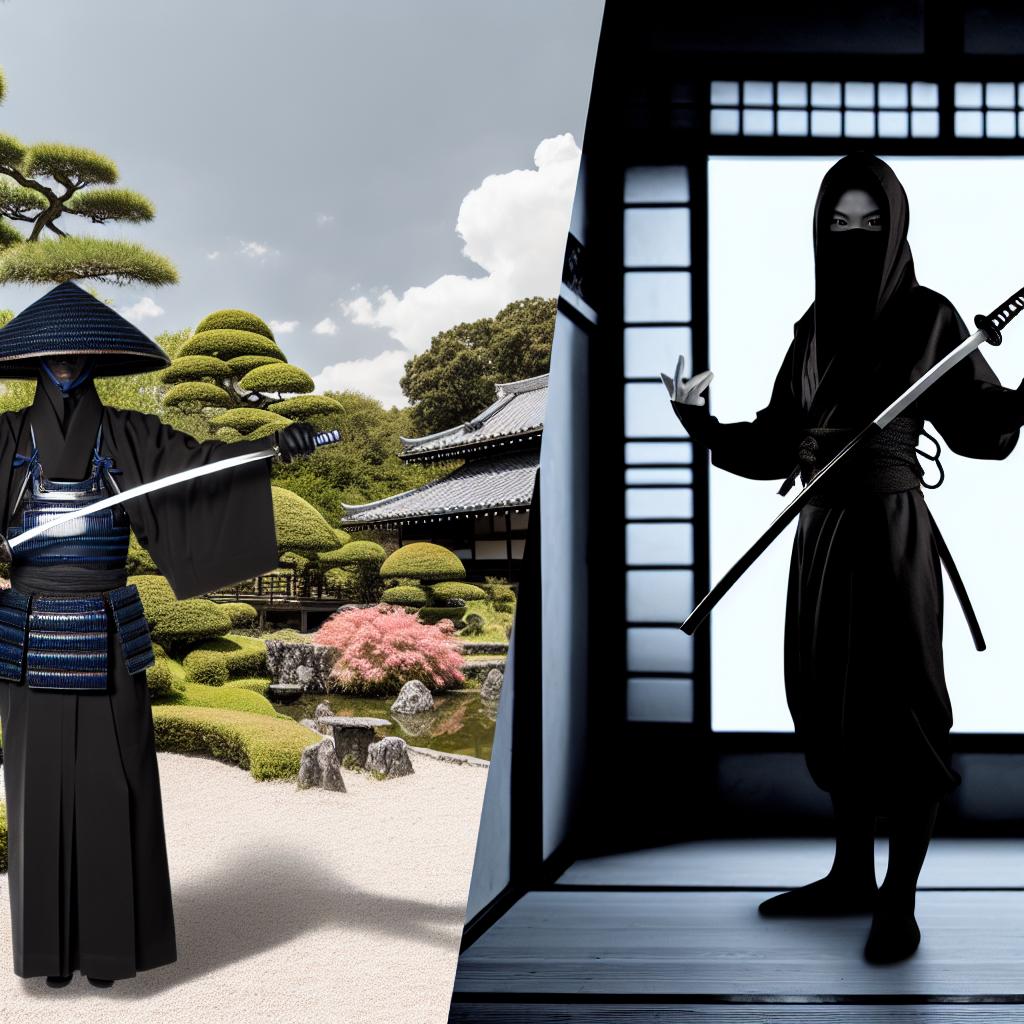Understanding Ronins and Shinobi
The world of feudal Japan is often associated with samurais, but the realms of ronins and shinobi, or ninjas, are equally fascinating. Both ronins and shinobi held distinct roles within Japanese society, yet they shared certain commonalities that drew curious connections between them.
Defining Ronins
A ronin was a samurai who no longer had a master. This status typically arose after the death of their daimyo, or due to a loss of favor. The term “ronin” means “drifting person” or “wave man,” highlighting their lack of affiliation and direction. Unlike samurai bound to a lord’s service, ronins lived a life of uncertainty, often resorting to mercenary work or wandering without ties.
The Role of Ronins in Society
Despite their uncertain status, ronins retained the training and skills of samurai, making them both feared and respected. Some pursued the path of honor, adhering to the bushido code, while others turned to lives of crime or mercenary activities. The image of the ronin embodies both vulnerability and resilience, as they navigated societal challenges without the support of a feudal system. They were perceived as versatile warriors, who, despite lacking a lord’s backing, often found ways to make a living through their combat skills and wit. A notable aspect of a ronin’s existence was the constant negotiation between maintaining personal honor and adapting to the practicalities of life without a master.
Over time, ronins came to symbolize individuals who maneuvered within or outside the law, illustrating the blurred lines between honor and necessity. Stories like those of the 47 Ronin—a group of samurai avenging their fallen master—provide a popular narrative of loyalty and retribution, capturing both historical and cultural imaginations.
Exploring Shinobi (Ninjas)
Shinobi, commonly known as ninjas, were covert agents skilled in espionage, sabotage, and guerrilla warfare. Unlike the warrior class of the samurai, ninjas often came from lower social standings. Emerging primarily during the Sengoku period, they operated in secrecy and were instrumental in carrying out clandestine missions.
Shinobi Skills and Tactics
Ninjas were masters of ninjutsu, a diverse set of skills encompassing espionage, disguise, and stealth. They were trained in martial arts and various weapons, making them effective in intelligence gathering and silent combat. The secrecy surrounding their operations contributed to the mystique and sometimes mythologized perception of their abilities. Their training included tactics such as camouflage, escape techniques, and the art of remaining unseen. They utilized unconventional warfare strategies, which were not bound by the traditional samurai conduct, thus making them agents of intrigue in war and peace.
Shinobi were also employed in roles beyond combat, such as scouting and information gathering, further underscoring their utility in the complex socio-political landscape of feudal Japan. This versatility made them invaluable allies and formidable adversaries during tumultuous times.
Commonalities and Connections
Although ronins and shinobi existed in different social spheres, several factors connected them. Due to their respective roles, both ronins and ninjas were partially marginalized figures in the rigid class structure of feudal Japan. Instead of adhering to conventional societal expectations, each adapted to changing conditions to ensure survival.
Versatility and Resourcefulness
Both ronins and shinobi needed to be adaptable and resourceful. Ronins, lacking a master’s protection, depended on their skills and reputation to find work, while ninjas executed missions requiring precision and adaptability. Their resourcefulness allowed them to navigate a complex and hierarchical society. The independence required of both roles meant cultivating a wide array of skills to address diverse challenges. Whether infiltrating hostile territory or finding meaningful employment opportunities, each had to rely on intellect and agility.
Furthermore, their ability to independently forge paths in society made them symbols of ingenuity and autonomy. This shared necessity for self-reliance manifested in remarkable ways, blurring the boundaries that separated them in societal ranks.
Myth vs. Reality
The perception of both ronins and shinobi is often clouded by myth and popular culture. While contemporary depictions sometimes romanticize their roles, historical accounts offer a more nuanced insight into their lives. For example, ronins are often seen as lone warriors fighting against injustice, while more realistic portrayals acknowledge their diverse circumstances. Similarly, ninjas are sometimes imagined as superhuman warriors with mystical abilities, rather than the pragmatic individuals they indeed were.
These myths and romanticized portrayals serve as cultural narratives that both entertain and obscure the underlying realities of their existence. By examining historical documentation, it becomes evident that their lives involved complex interactions with the surrounding social and political dynamics. Popular culture often amplifies select features and exploits dramatization, whereas genuine historical narratives present a range of experiences beyond common stereotypes.
Conclusion
The connection between ronins and shinobi lies in their shared experience of navigating feudal Japan’s intricate social fabric. By understanding their respective roles, one can appreciate the interplay between honor, survival, and adaptability that defined their existence. Whether viewed through the lens of history or popular culture, ronins and ninjas remain enduring symbols of Japan’s rich and complex past.
Through examining the historical contexts that fostered these roles, we gain deeper insights into the resilience and adaptation strategies employed by those outside the conventional power structures, paving ways to understanding the broader dynamics at play within the era they existed. As emblematic figures, they represent not only individuals thriving against adversity but also a rich tapestry of cultural heritage that continues to invoke interest and admiration from generations old and new. The narratives of ronins and ninjas engage our curiosity and perhaps invite introspection on the concepts of honor, duty, and the enduring human spirit.

